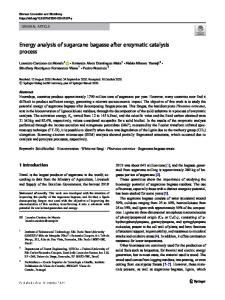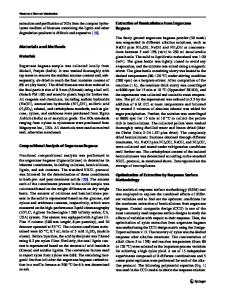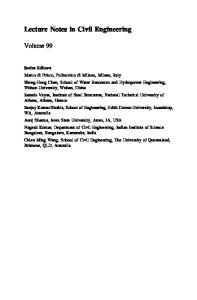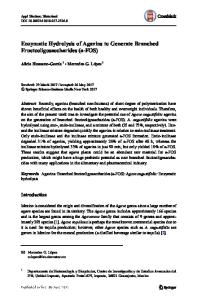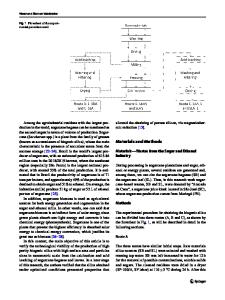Optimal Bioreactor Operational Policies for the Enzymatic Hydrolysis of Sugarcane Bagasse
- PDF / 611,101 Bytes
- 10 Pages / 595.276 x 790.866 pts Page_size
- 98 Downloads / 281 Views
Optimal Bioreactor Operational Policies for the Enzymatic Hydrolysis of Sugarcane Bagasse Inti Doraci Cavalcanti-Montaño & Carlos Alberto Galeano Suarez & Ursula Fabiola Rodríguez-Zúñiga & Raquel de Lima Camargo Giordano & Roberto de Campos Giordano & Ruy de Sousa Júnior
Published online: 22 January 2013 # Springer Science+Business Media New York 2013
Abstract The consolidation of the industrial production of second-generation (2G) bioethanol relies on the improvement of the economics of the process. Within this general scope, this paper addresses one aspect that impacts the costs of the biochemical route for producing 2G bioethanol: defining optimal operational policies for the reactor running the enzymatic hydrolysis of the C6 biomass fraction. The use of fed-batch reactors is one common choice for this process, aiming at maximum yields and productivities. The optimization problem for fed-batch reactors usually consists in determining substrate feeding profiles, in order to maximize some performance index. In the present control problem, the performance index and the system dynamics are both linear with respect to the control variable (the trajectory of substrate feed flow). Simple Michaelis–Menten pseudo-homogeneous kinetic models with product inhibition were used in the dynamic modeling of a fed-bath reactor, and two feeding policies were implemented and validated in bench-scale reactors processing pre-treated sugarcane bagasse. The first approach applied classical optimal control theory. The second policy was defined with the purpose of sustaining high rates of glucose production, adding enzyme (Accellerase® 1500) and substrate simultaneously during the reaction course. A methodology is described, which used economical criteria for comparing the performance of the reactor operating in successive batches and in fed-batch modes. Fed-batch mode was less sensitive to enzyme prices than successive batches. Process intensification I. D. Cavalcanti-Montaño : C. A. G. Suarez : U. F. Rodríguez-Zúñiga : R. de Lima Camargo Giordano : R. de Campos Giordano : R. de Sousa Júnior (*) Department of Chemical Engineering, Federal University of São Carlos, Rod. Washington Luís, Km 235, 13565-905, São Carlos, SP, Brazil e-mail: [email protected]
in the fed-batch reactor led to glucose final concentrations around 200 g/L. Keywords Enzymatic hydrolysis . Cellulose . Bagasse . Sugarcane . Bioreactor . Fed batch
Nomenclature D Dilution Ffeed/V (per minute) e Enzyme concentration (in grams per liter) eaccumulated Enzyme accumulated in the reactor (in filter paper unit) efeed Enzyme to be added into the reactor (in filter paper unit) Ffeed Substrate feeding flow rate (in liters per minute) fi Process cash flow (in US dollars) fi2 Process cash flow per kilogram of treated bagasse (in US dollars per kilogram of bagasse treated) H Hamiltonian J Performance index k Rate constant of cellulose hydrolysis (per minute) ki (Competitive) glucose inhibition constant (in grams per liter) km Michaelis–Menten constant (in grams per liter) Maccumulated
Data Loading...
